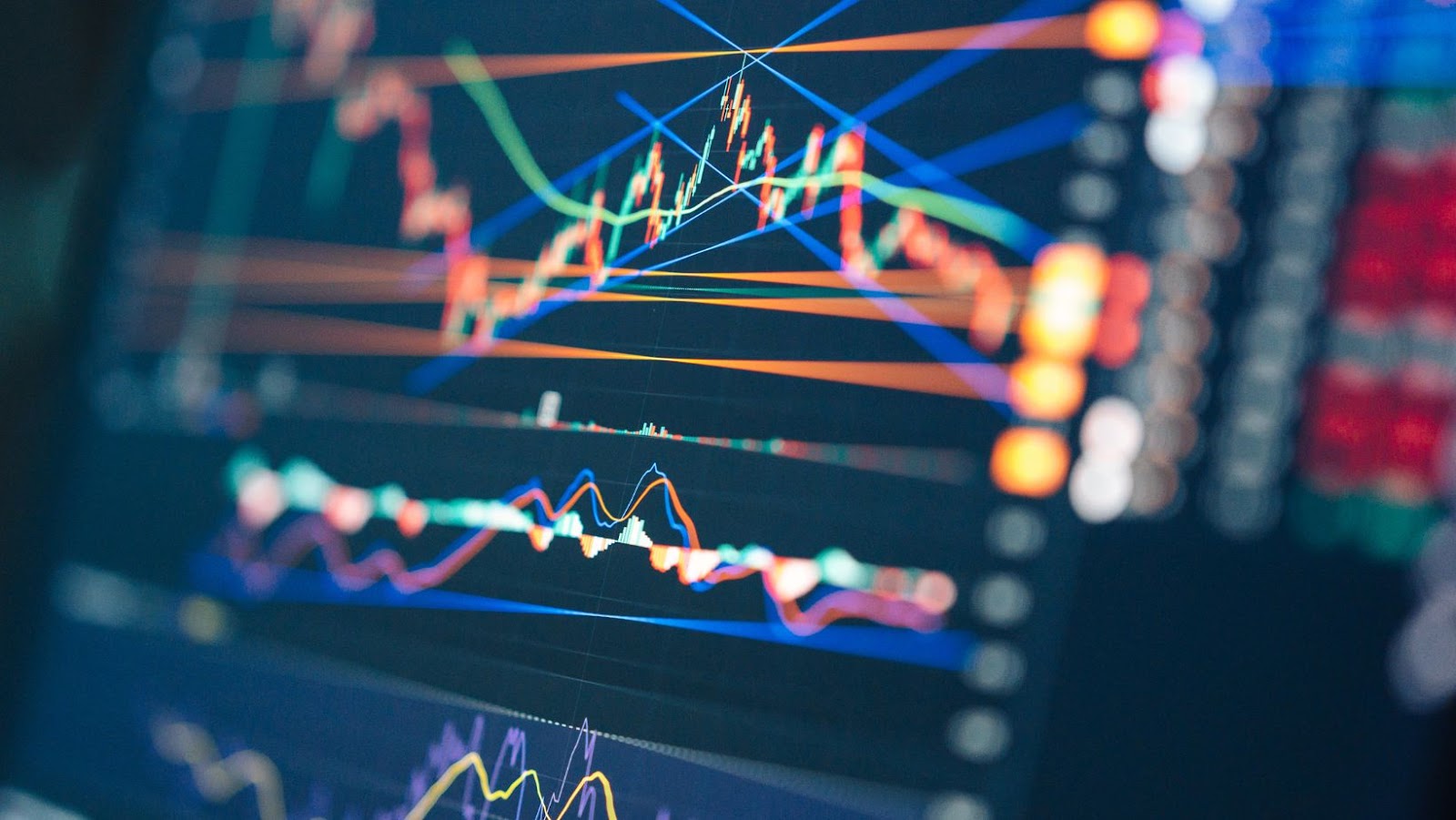

This article will discuss Synthetix, how it works, and the most recent news surrounding the platform.
Overview of Synthetix
Synthetix is a decentralised synthetic asset platform that allows users to create and trade synthetic assets of any type without needing a trusted third party. Using Synthetix Exchange (SNX) tokens and underlying infrastructure powered by Ethereum blockchain, users can collateralize their digital assets and create new tokens, such as sBTC, sUSD, and more. These newly created tokens are equivalents of their original real-world assets, allowing traders to hold them over time with minimal friction.
The Synthetix platform is built on top of the Ethereum network, providing users with an immutable ledger that tracks all transaction records. The distributed ledger technology (DLT) ensures that transactions are stored across numerous computers worldwide, eliminating trust in single parties or entities. This ensures that transactions are processed securely and transparently – with no limitations on where users can trade from or which currencies they can use to finance trades.
In addition to this layer of security provided by Ethereum’s blockchain technology, Synthetix also has its peer-to-peer protocol that supports direct connections between traders across the globe. Furthermore, the protocol allows for decentralised order execution – no central exchange or third party intervention is necessary when executing buy/sell orders on the Synthetix marketplace. This platform aspect also offers advantages such as faster transaction times than traditional exchanges and low trading fees.
Overview of the $12 million raise
In early 2020, Synthetix, a decentralised synthetic asset platform, raised $12 million to further develop its platform and provide users with an efficient way of trading derivatives. By bringing together leading venture capital firms and renowned investors, the funding round aimed to bolster the development and scaling of the Synthetix financial applications.
Through this injection of capital, the decentralised financial applications developed by Synthetix were able to leverage new technologies such as blockchain and smart contracts to facilitate decentralised derivatives trading for assets such as currencies, commodities, stocks and even crypto. Such expansion provided more options for retail investors seeking higher liquidity products across various markets.
The $12 million raise also enabled wider adoption of new products servicing institutions while allowing users safe access to their digital assets on the platform with flexible margin and risk management parameters that can be set on individual accounts. Apart from this, funds were invested into exploring new markets where greater liquidity is available alongside local asset prices that Synthetix users can place trades against. Once fully deployed, the goal is to provide access to global opportunities with local services delivered through trustless infrastructure.
Benefits of Synthetix
Synthetix is a decentralised synthetic asset platform that enables users to trade tokenized assets on Ethereum. The platform announced that it has secured $12 million in a funding round led by Paradigm, Coinbase Ventures, and IOSG. With this funding, Synthetix looks to expand its platform and a range of other benefits.
In this article, we will look deeper into the advantages of Synthetix.

Decentralised platform
Synthetix is a decentralised platform that allows users to access several types of synthetic assets. These assets, known as Synths, are pegged to underlying real-world assets such as shares, commodities, currencies and crypto tokens. The Synthetix platform operates on the Ethereum blockchain. It leverages a variety of smart contracts and its native algorithmic stablecoin sUSD to facilitate cross-asset trading with zero fees or slippage. Using its sUSD token, Synthetix provides users access to a blockchain-based financial system with trustless collateralization, automated liquidity management, arbitrage and market making built in.
The primary benefit of Synthetix’s decentralised infrastructure is that trading is completely trustless — meaning there’s no need for counterparties or brokers who can manipulate prices or withhold funds. Additionally, by utilising smart contracts on the Ethereum blockchain, Synthetix ensures that all transactions are securely stored on an immutable ledger and remain secure from outside interference. Furthermore, Synthetix also offers an API for developers to build their frontend applications for trading Synths through the platform. This gives traders more control over their experience when trading synthetic assets on the platform.
Synthetic assets
Synthetic assets are not physically owned but backed by a smart contract and allow users to interact with complex financial instruments on the blockchain. Synthetix is the leading issuer of such synthetic assets and provides the benefits of financial instruments that can replicate some characteristics of stocks, commodities, indices, and cryptocurrencies.
Thanks to Synthetix’s open-source technology, users can trade these assets without intermediate entities like brokers or custodians which often depend on fiat infrastructure, thus making it a much more efficient way to interact with digital markets. Furthermore, with its secure system, crypto traders will get exposure to different asset types while reducing their risk through diversification without needing complicated KYC verification processes.
Synthetic assets offer advantages over physical assets, making them preferable in many circumstances. These include 24/7 global access to market trading and execution speeds unavailable under traditional exchanges since they use blockchain technology. It also eliminates the need for middlemen such as banks or brokers from the process making it faster and cost-effective as users do not have to pay high interchange fees compared to traditional exchanges.
The Synthetix Derivatives Model also allows for efficient hedging against exposure which protects against market volatility by guaranteeing predictability of returns depending on the specifics of each trade for an increased level of safety for traders. Overall, synthetic assets reduce investment complexity and offer unparalleled levels of liquidity in the digital asset market.

Automated market-making
Automated market-making is a feature of Synthetix that allows traders to use automated protocols to buy and sell synthetic assets. Automated market-making allows users to quickly establish and maintain liquid markets without manually adjusting prices as the market fluctuates. This programmable liquidity is an efficient way for traders to find the best price on the Synthetix Exchange without sitting in front of their PCs all day.
Another benefit of using automated market-making on Synethetix is its scalability. Automated market-makers can easily handle larger orders, meaning that large amounts of capital can be moved across multiple markets at once with minimal effort. Additionally, automated market makers can automate pricing, giving instant price quotes that make it easier for traders to know whether they are getting a good deal in a given trade.
Finally, automated market makers free up traders’ time since they no longer need to spend hours monitoring multiple exchanges at once — instead allowing them to maximise profits while doing other activities.
Synthetix announces $12 million raise led by Paradigm, Coinbase Ventures, and IOSG
Synthetix, a decentralised synthetic asset platform, has announced today that it has raised $12 million in a financing round led by Paradigm, Coinbase Ventures, and IOSG.
This round has made some of the leading investors in the space take a closer look, and it’s worth exploring the list of investors and what this could mean for Synthetix’s future.
Paradigm
Paradigm is a global venture capital firm and cryptocurrency fund based in San Francisco that invests exclusively in early-stage blockchain companies. The fund has been an active partner of Synthetix since the platform’s early days, providing both strategic and financial guidance. As the lead investor in the $12 million raise, Paradigm will be instrumental to helping Synthetix continue to expand its decentralised financial ecosystem.
Paradigm partners with leading entrepreneurs and investors around the globe, who provide comprehensive support spanning research, product development, recruiting, legal expertise, fundraising advice, and much more. Paradigm’s team comprises market experts and industry veterans from quantitative trading backgrounds with a deep history in venture democracy. In addition, the team prioritises investments that maximise network effects and prioritise liquidity – which are especially beneficial for open finance protocols like Synthetix.
Coinbase Ventures
Coinbase Ventures is a strategic investment fund sponsored by Coinbase, the world’s leading consumer-focused cryptocurrency asset platform. Coinbase Ventures focuses on early-stage investments in programmable money to further the development of crypto projects and strengthen the ecosystem more generally.
Coinbase Ventures first invested in Synthetix in the $12 million raise. Their investment was focused towards Synthetix’s goal to facilitate low-friction financial products on Ethereum, as well as making DeFi accessible to users around the world. The team also saw potential for Synthetic’s use cases to expand beyond DeFi, particularly related to global asset trading and peer-to-peer payments markets.
IOSG
Leading the round of investments in the Synthetix $12 million capital raise is institutional investor IOSG. Founded in 2013, IOSG Ventures (@iosgv) as a venture fund investing in early-stage tech companies has become one of Asia’s most recognizable blockchain firms with over $200 million of assets under its management.
IOSG’s portfolio includes some of the biggest crypto-native companies such as cryptocurrency exchange Huobi and decentralised applications platform Status focused on mobile privacy and security. In addition to Synthetix, IOSG has stakes in Tokenlon, Volentix, Toko Crypto, OnENetwork, Lendf.me, Dogiher & Bitpie among others.
The investment from IOS emphasises a newfound focus on cross-border collaboration leveraging leading blockchain protocols to create robust new DeFi projects and build financial ecosystems that bring real-world financial infrastructure within grasp for people beyond traditional banking channels. The addition of Synthetix into the list further emphasises that point.
Use Cases
Synthetix aims to provide users with a platform to create on-chain synthetic assets, allowing users to long and short assets without owning them.
Synthetix has been greeted by a wave of new investors, raising $12 million in a round led by Paradigm, Coinbase Ventures, and IOSG. This capital will enable the Synthetix platform to expand its tokenized asset offering and drive ecosystem growth.
Now let’s discuss the use cases of Synthetix.
Leveraging synthetic assets for hedging
Leveraging synthetic assets for hedging is one of the primary use cases for Synthetix, a decentralised asset platform. Synthetic assets are digital, blockchain-based tokens that offer exposure to properties such as price, return, or default without providing direct ownership. Using Synthetix’s platform, individuals and institutions can access these synthetic assets to hedge risk in various markets.
Synthetic assets allow investors to diversify their portfolios while avoiding the complexity of traditional financial instruments such as Futures contracts and Options. They also offer more transparent and liquid markets than other types of derivative products. By accessing synthetic assets on the Synthetix platform, investors can hedge against losses in certain financial instruments while taking advantage of any potential market upside.
The Synthetix platform enables users to easily create and manage synthetic asset positions based on live data from various global markets. They then have full control over entering and exiting positions from counterparty risk-free settlements with no slippage or limit orders required. Moreover, its decentralised exchange provides higher liquidity than centralised exchanges since transactions involve no counterparty risk. With all these features combined, Synthetix makes it easy for users to securely manage their synthetic asset positions confidently in an ever-changing market environment.
Accessing traditional markets with synthetic assets
Synthetix is a decentralised synthetic asset platform that enables traders, hedgers and developers to easily access traditional markets. Through Synthetix, people can use blockchain-based synthetic assets to trade traditional markets with reduced risk, lower cost, higher liquidity and on-demand tokenization. Using Synthetix’s innovative technology, financial institutions and individuals can take advantage of market opportunities anytime, anywhere.
Synthetix utilises an ecosystem of its native tokens – Synths – to expose traders to assets such as commodities, stocks and cryptocurrencies without owning any underlying physical product. Instead, synths are collateralized by the underlying assets held in reserve by the Synthetix Exchange while providing users with Smart Contracts on the Ethereum blockchain. Synths allow users to trade strategies such as long/short or pair trading with greater flexibility thanks to instant settlement times and access across multiple blockchain networks.
In addition to trading the various Synths, other unique use cases are possible including algorithmic trading on high frequency data sets by leveraging off-chain data feeds; creating liquidity for product swaps for token holders; issuing virtual shares; and hedging against risks associated with cryptocurrency price volatilities through advanced order types such as stop loss orders. Synthetix also enables users to open up avenues for arbitrage opportunities while providing access to solutions not currently available in traditional markets such as custom margin requirements.
Through decentralised synthetic assets Synthetix allows users to gain unparalleled access into traditionally hard-to-reach markets without compromising regulatory compliance or sacrificing portfolio performance yields or liquidity levels.
Automated market-making
Automated market-making (AMM) protocols allow users to provide liquidity and make markets automatically, enabling traders to buy and sell many different products in a decentralised manner. AMMs are one of the most important use cases of Synthetix, as they leverage its decentralised exchange infrastructure to facilitate trades. By leveraging smart contracts, Synthetix enables users to trade a variety of synthetic assets and take advantage of lower slippage cost and faster execution compared to traditional exchanges.
Synthetix’s automated market-making protocol uses an open-source algorithm called SNXturner that adjusts the ratio between supply and demand for synthetic assets generated on the platform. This algorithm rebalances constant liquidity pools (CLPs) to always provide tight spreads even when there is significant volatility in the underlying asset prices. Synthetix also offers an automated market maker incentive program that incentivizes people who contribute large amounts of capital to actively participate in the network by providing liquidity to Synthetix’s CLP pools. This program ensures adequate liquidity for all types of trades including large ones that would otherwise face significant slippage costs on other exchanges due to lack of volumes available for trading.
Synthetix’s automated market-making protocol allows users to enter into synthetic asset positions without worrying about counterparty risk or exorbitant carves from traditional exchanges through smart contract mechanisms. Furthermore, its incentivization structure encourages participants with large capital reserves which further contributes towards higher levels of liquidities within the network and tighter spreads for consumers leading to more efficient markets overall.












